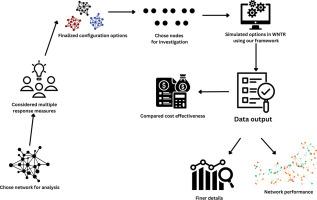基于压力驱动分析模拟的断水响应措施评价
IF 12.4
1区 环境科学与生态学
Q1 ENGINEERING, ENVIRONMENTAL
引用次数: 0
摘要
供水管网(WDN)的研究很少探讨响应措施配置对断水的影响。此外,对截止响应措施的研究通过弹性指标量化了水务公司在运营中通常难以应用的性能。这些因素阻碍了后续的工具探索,水务公司可以使用这些工具来寻找弹性供水网络的解决方案。在水源污染等故障事件发生后,如果不能解决WDN的复原力问题,可能会导致供水紧急情况持续很长时间。供水紧急情况是关键问题,因为它们影响社区福利和商业运作。因此,水务公司必须采取应对措施,在恢复供水管网全面运作的同时保持充足的供水。本研究分析了在断水情况下,响应措施对基准WDN的全网影响。模拟一直进行到供应耗尽,以探索压力不足条件下的措施效果。本文的研究结果提出了一种方法,可用于分析响应措施并帮助水务公司进行减灾规划。本文章由计算机程序翻译,如有差异,请以英文原文为准。

Evaluation of Response Measures for Water Cutoffs Using Pressure Driven Analysis Simulations
Water distribution network (WDN) research rarely explores the effects of response measure configurations for water cutoffs. Furthermore, the research that does explore cutoff response measures quantifies performance with resilience metrics that are often difficult for water utilities to apply in operation. These factors hinder the subsequent exploration of tools that water utilities can use to find solutions for resilient water networks. Failure to address resilience in a WDN can lead to prolonged periods of water supply emergencies after failure events such as source-water contamination. Water supply emergencies are critical problems because they affect the welfare of communities and commercial operations. Thus, it is important for water utilities to have response measures that maintain adequate supply while full operation of the WDN is restored. This study analyzes the network-wide impact of response measures on a benchmark WDN undergoing a water cutoff scenario. Simulation is performed until supply is exhausted to explore the effect of the measures under pressure deficient conditions. The findings in this paper present a methodology that can be used to analyze response measures and aid water utilities in mitigation planning.
求助全文
通过发布文献求助,成功后即可免费获取论文全文。
去求助
来源期刊

Water Research
环境科学-工程:环境
CiteScore
20.80
自引率
9.40%
发文量
1307
审稿时长
38 days
期刊介绍:
Water Research, along with its open access companion journal Water Research X, serves as a platform for publishing original research papers covering various aspects of the science and technology related to the anthropogenic water cycle, water quality, and its management worldwide. The audience targeted by the journal comprises biologists, chemical engineers, chemists, civil engineers, environmental engineers, limnologists, and microbiologists. The scope of the journal include:
•Treatment processes for water and wastewaters (municipal, agricultural, industrial, and on-site treatment), including resource recovery and residuals management;
•Urban hydrology including sewer systems, stormwater management, and green infrastructure;
•Drinking water treatment and distribution;
•Potable and non-potable water reuse;
•Sanitation, public health, and risk assessment;
•Anaerobic digestion, solid and hazardous waste management, including source characterization and the effects and control of leachates and gaseous emissions;
•Contaminants (chemical, microbial, anthropogenic particles such as nanoparticles or microplastics) and related water quality sensing, monitoring, fate, and assessment;
•Anthropogenic impacts on inland, tidal, coastal and urban waters, focusing on surface and ground waters, and point and non-point sources of pollution;
•Environmental restoration, linked to surface water, groundwater and groundwater remediation;
•Analysis of the interfaces between sediments and water, and between water and atmosphere, focusing specifically on anthropogenic impacts;
•Mathematical modelling, systems analysis, machine learning, and beneficial use of big data related to the anthropogenic water cycle;
•Socio-economic, policy, and regulations studies.
 求助内容:
求助内容: 应助结果提醒方式:
应助结果提醒方式:


